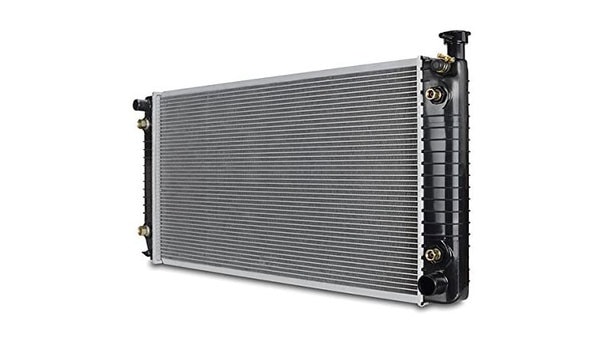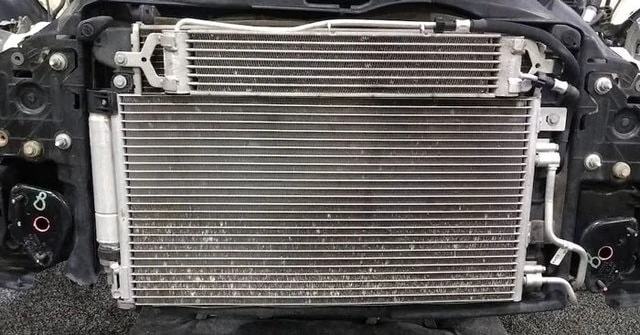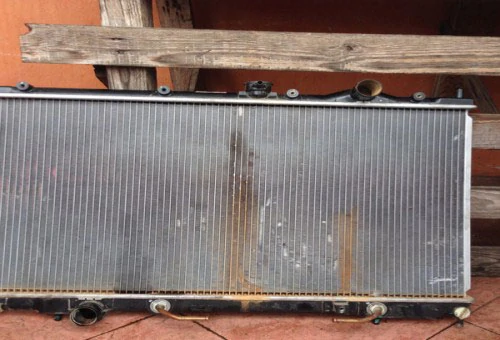If you own a car, it is important that you know about all the parts of your car. Knowing about the internal parts is the trickiest, but they are also the most important parts since they are the reason your car runs.
The radiator is one of those internal parts that control the temperature of your car. It is basically the cooling system of your car, so its very job is to keep the engine of your car cool.
Sometimes these radiators don’t work properly, so they need to be replaced. But how will you know when you need to replace them? Read on to know how to tell if you need a new radiator.
Read More : Best Radiator Flush
How to Tell if You Need a New Radiator?
Car parts are not something to be changed frequently. But sometimes a part here and there might need changing over time. This can happen even after you keep your car well maintained and in good shape. Some parts are just not meant to go on for many years or even months.
And it’s not possible for you to keep a track record of every car part you bought to know when they expire. The most likely way you end up knowing is when something wrong happens to your car. Something could end up being damaged, or something might not run the way it is supposed to.
The same goes for radiators. Since its job is to keep your engine cool, the obvious bad sign would be if your car engine starts overheating. Aside from that, there are many other ways you can tell if your engine needs a new radiator. Some of them are given below:
1. Leakage
Radiators very often leak and cause problems for your car. After you drive out of your garage for work, you should always make sure to get out once and check the garage floor to make sure you see no fluids. If there are fluids, then that is a sign that your radiator is most likely leaking.
There is a coolant present inside your radiator, which creates the whole cooling system for your car. If that coolant escapes or leaks out, then the engine will not remain cool like it is supposed to.
And there are many things that cause this leakage, but it all starts with a crack. This crack is where the coolant leaks out. The crack could have been caused by a collision with something under your car. Another reason could be that the material containing the coolant could have eroded and cracked from heat or because it got too old.
A good way to find this very crack is by watching to see from which area steam escapes from the closed up radiator. Radiator hoses are also the most probable areas where cracks could happen. If you have a leak, you should check that area, and you might luckily see steam coming out.
You can have a mechanic patch up that crack if it is not too big. But if the crack is large and spreads out more, then you will need to get a new radiator.
2. Blockage
There are cooling passages in your radiator. If those get blocked in any way, then the coolant will not flow throughout the engine correctly.
Blockages make it hard for air to flow as well, so it eventually doesn’t let the heat transfer into that air. If the heat stays locked inside, that damages the radiator by creating an overheating problem.
This sort of problem isn’t easily repaired, and it would cost way more to repair blocked passages. The better option is to buy a new radiator since a radiator with blockages is already considered a faulty radiator.
3. Corrosion
Over time, rust can form all over your radiator. This corrosion or rust disrupts the functions of your cooling system. Every time you are driving your car, the movement or jerking will cause bits of rust from the inner walls to fall off. These rusty bits will fall directly into your coolant.
When this continues, your coolant will form into a thick, darker pigmented liquid. Eventually, the coolant will not work properly to cool your engine.
Some people clean up this kind of mess by using radiator flush products. You can go to stores that sell you car parts and solvents like Mobil, battery oil, etc. And you can easily find the best radiator flush for rust.
You usually just have to drain out the dirty coolant along with all the debris out of your radiator by opening the bleed valve. Then you pour in the clean radiator flush and close the valve and run your engine to let the solution heat up and break down the rust from the inner walls.
Rinse it out with water a few times until you see a clear radiator. Then you can add new coolant. Although, if the corrosion build-up is too much, then you have no other choice but to buy a new radiator.
4. Overheating
The coolant inside the radiator circulates throughout the engine. In this way, the engine stays cool. The coolant, however, reduces bit by bit every time it circulates through to cool everything down. And the same coolant is present in the radiator and used multiple times for weeks or even months.
Over time, the coolant will lose its effectiveness and will not be able to cool down the engine like it is supposed to. That is when your engine begins overheating. There is a thermostat in your car’s engine, which records the temperature of the coolant.
And the normal temperature of the coolant should be low since its job is to create a cooling system for the engine. If the thermostat shows that your coolant is high, that means you need to replace your coolant with a new one.
Sometimes you might end up with a bad thermostat that doesn’t work anymore. So, you end up not investigating any further and make it worse for your radiator. Eventually, your radiator will end up being in a condition where adding new coolant won’t solve anything. That is when you will need a new radiator.
Final Words
Other than the above symptoms, there are still other signs or symptoms that can point out that you need a new radiator.
And not every sort of problem can be repaired. Some repairs are so complicated that it will cost you more money than buying a brand new radiator. And some repairs are so risky it could end up making the problem turn into a larger problem later on.
So it is best if you notice the signs beforehand and replace your radiator as soon as possible. And that won’t be difficult since now you know how to tell if you need a new radiator.

Myself Erick R. Jackson, I am a Computer Science graduate by law but a passionately enchanted blogger by profession.
A few years back, it all started with my first blog website. It was about to deal and heal with automotive hand tools. Well, it brought me a good audience base for sure, which then dragged me out of my major and got me to sit and write, and be a blogger. Read more



